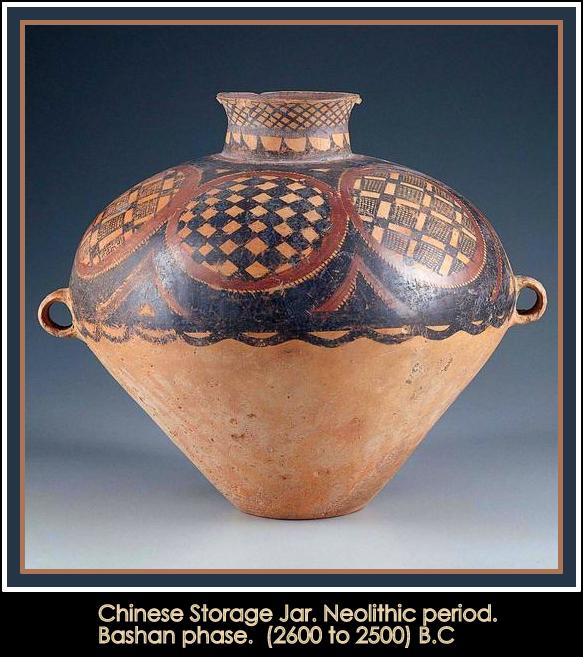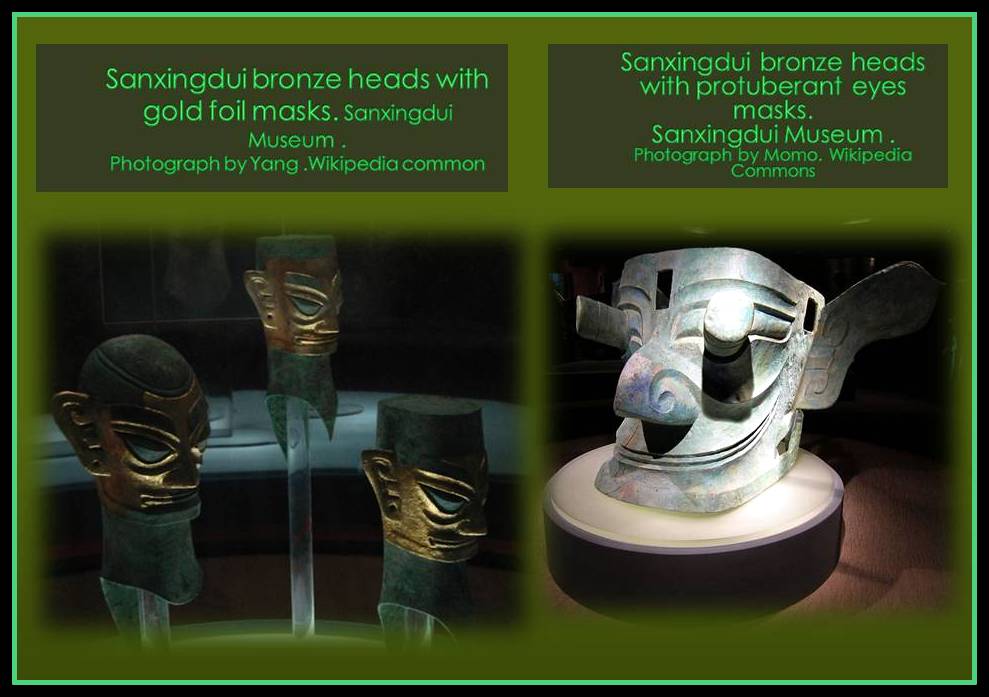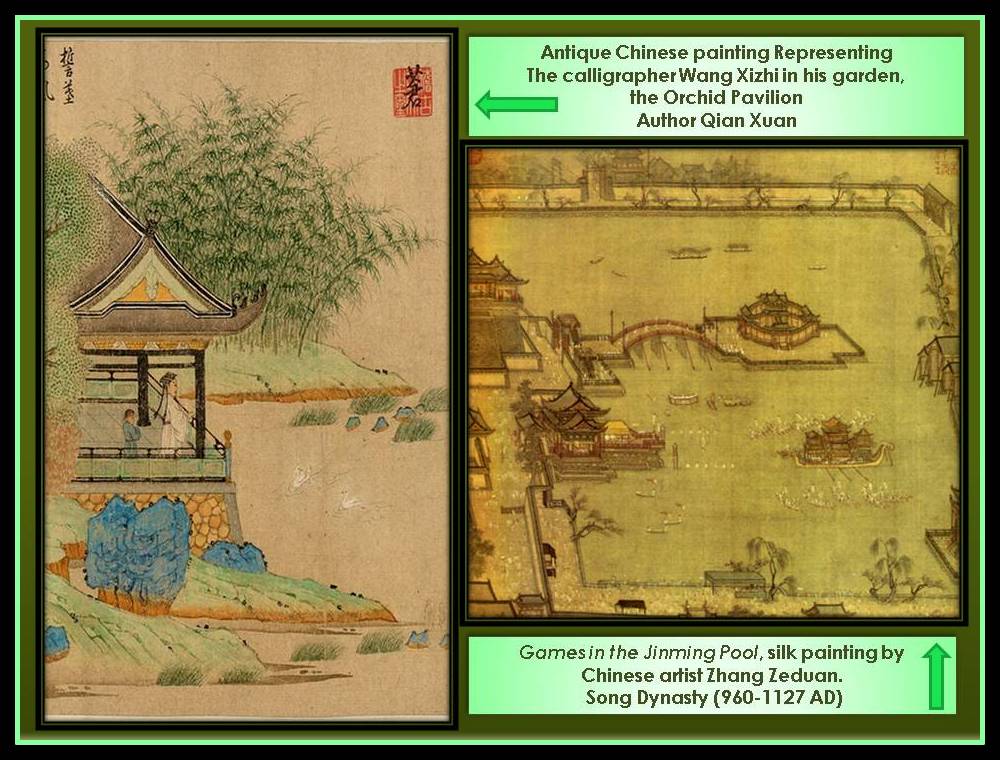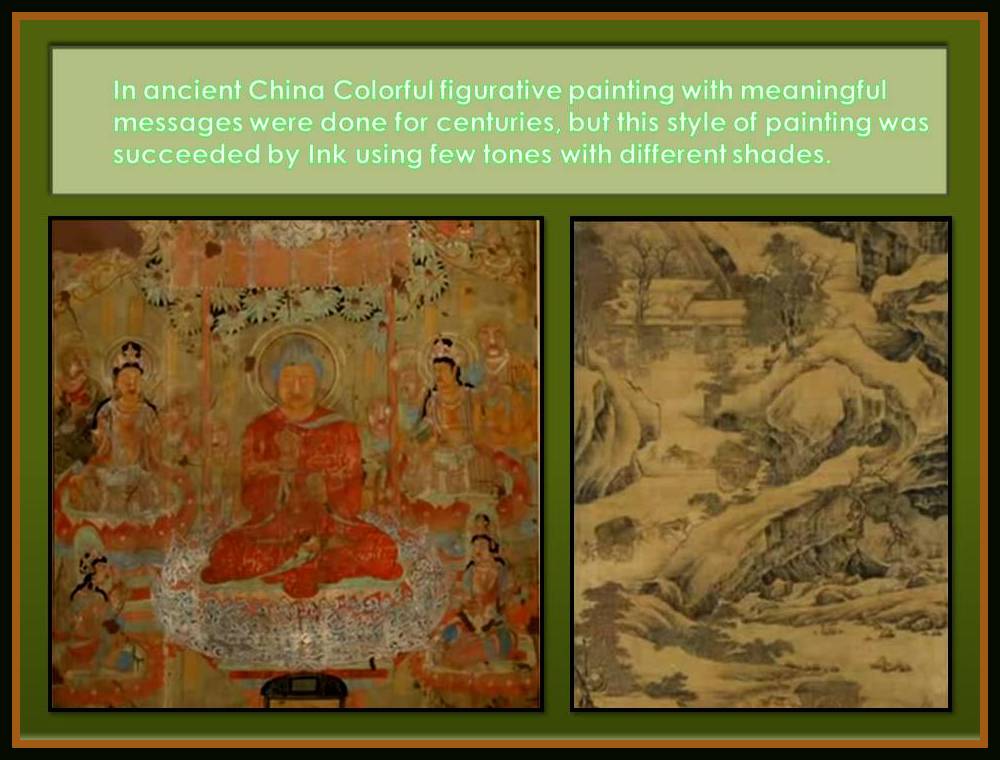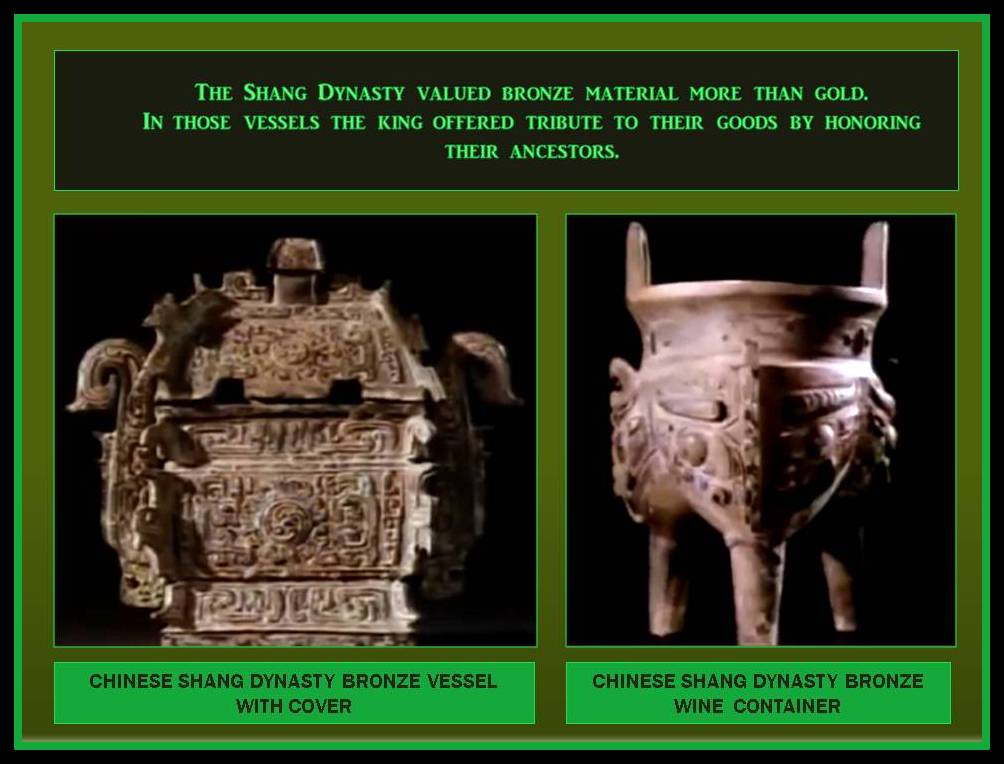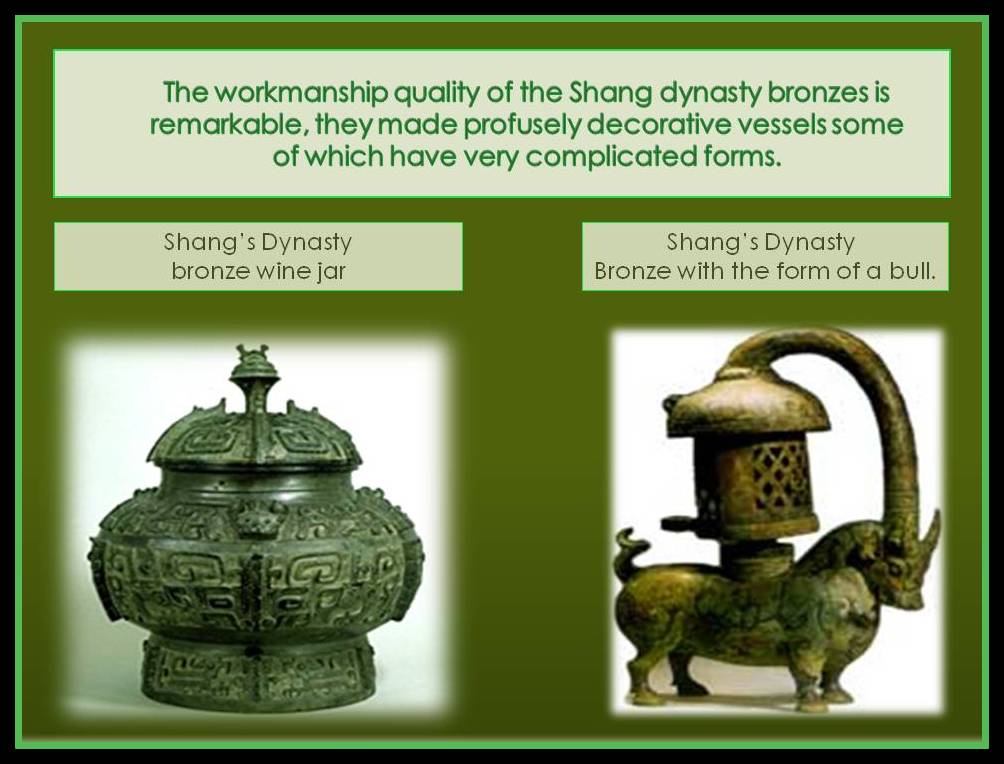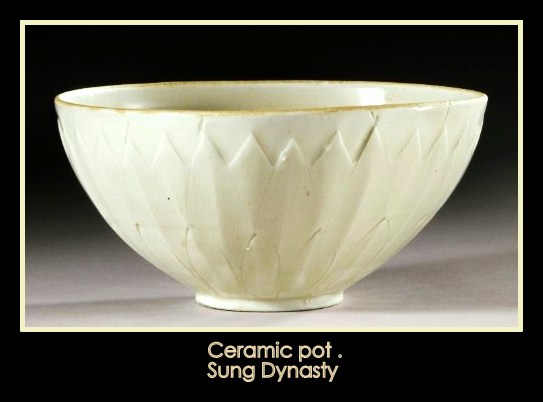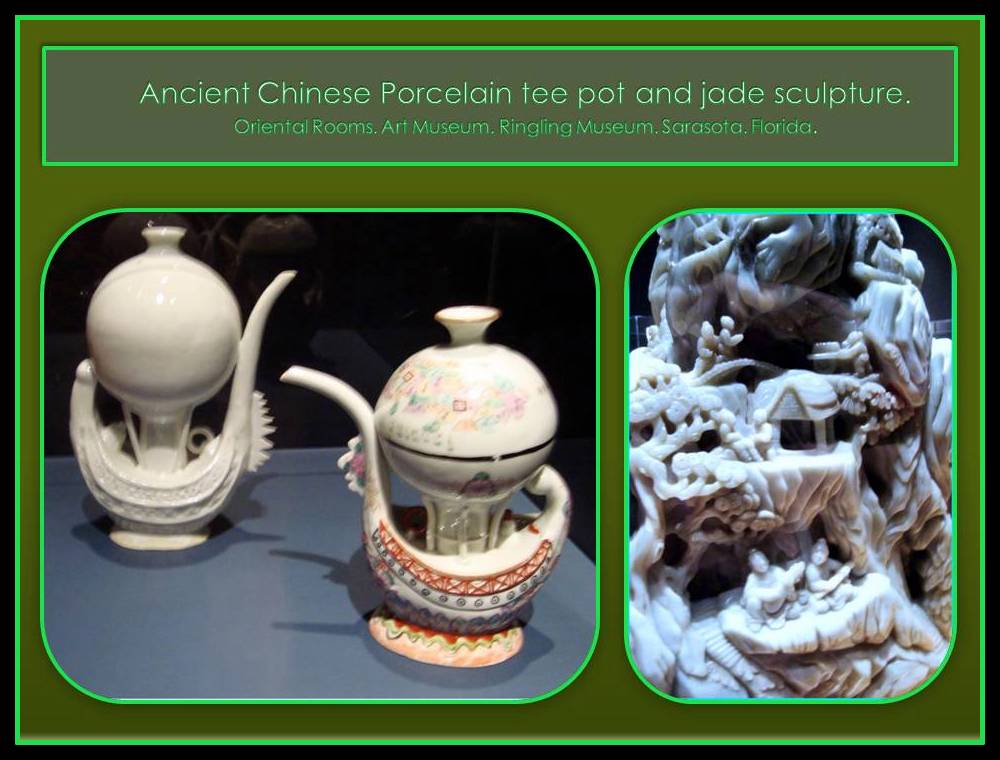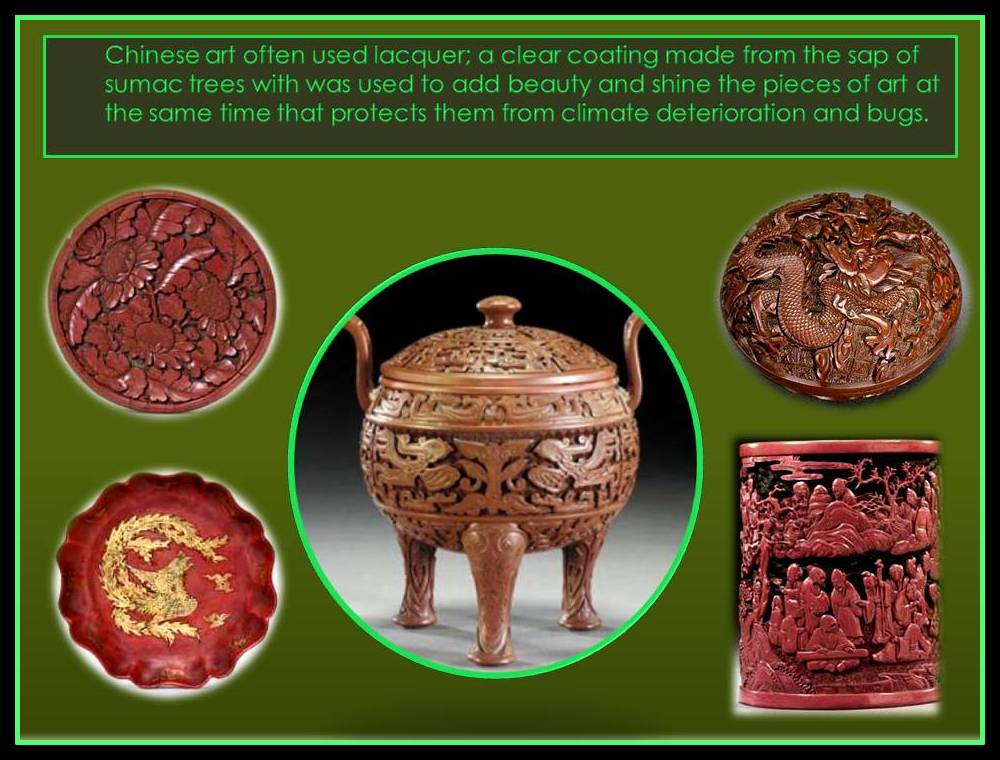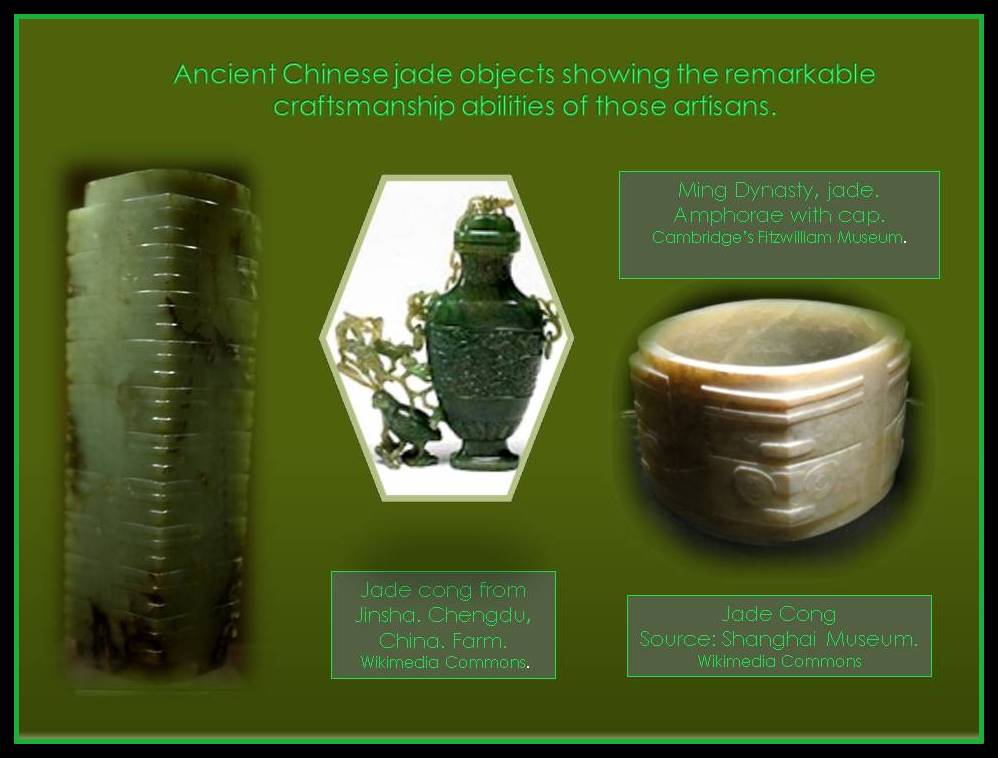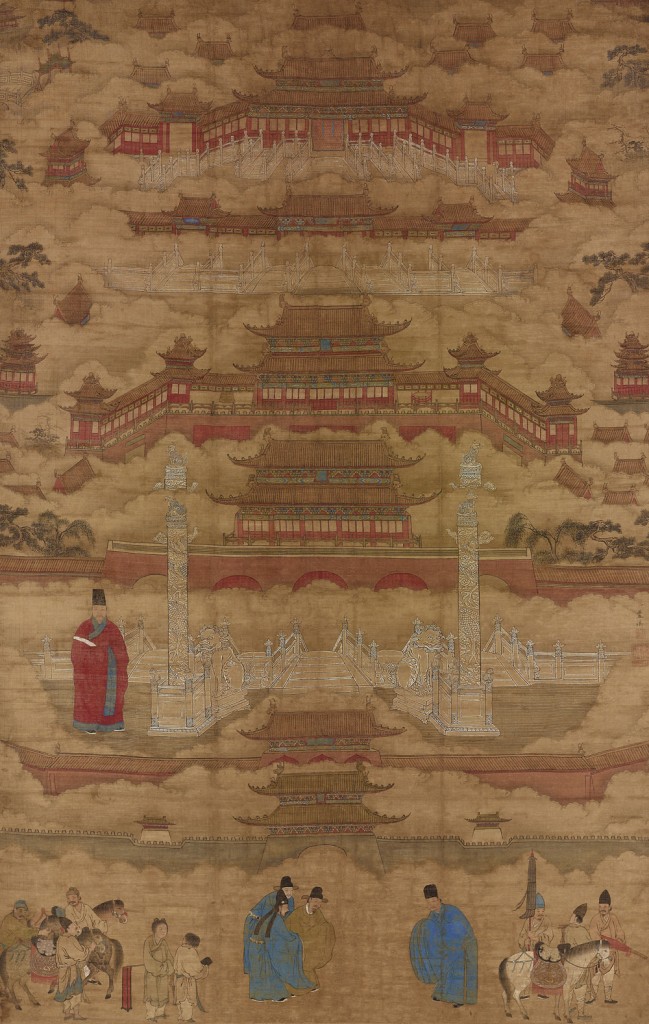Art of ancient Chinese civilization
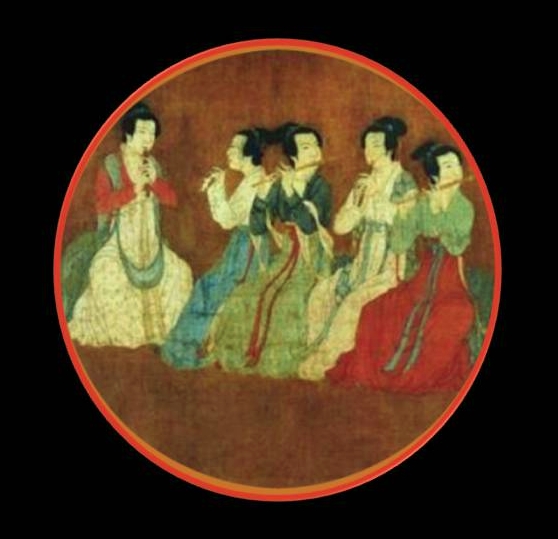
Art of Ancient Chinese Civilization
Art of ancient Chinese Civilization is very peculiar, distintive from others because Chinese Civilization is likely one; among most ancient civilizations that have particularly maintained a cultural continuity and philosophical cohesion throughout its history, thanks in part to its geography location that is unique, situated at the end of the Asian continent facing the Pacific Ocean, which allowed them to keep their strong culture pretty much intact, but thanks also to their way of life, which was very intimate keeping their distances from the influences of the outside world across millenniums.
Even though few of the invaders along Chinese history could have diluted their way of life and Idiosyncrasy by absorbency, the Chinese choose to stick to their traditions and belief firmly, continued their devotion to nature and their ancestors, even when different religious believes were sustained in the country, as well as when invaders forced their violent ways in China.
Chinese people keep as well their country, reliable on a self-sufficient economic, since traditional customs and artisanal trades knowledge pass from generation to generation among members of the families. Their art productions were a direct reflection of their particular believe and their philosophy of life. Particularly in early times, art also had social and moral functions. Witch the beginnings of the modern world in the XVI century was brought to them as well the effects of a huge wave of events that imposed important changes in the world. Chinese culture was also in certain way influenced by those changes and other internal issues, but this article would concentrate in ancient Chinese period art.
Up to the Warring States period (475–221 B.C), the artistic representations were produced by anonymous craftsmen for the royal and feudal courts. It is thought that during the Shang and early Zhou periods the production of ritual bronzes was exclusively regulated under the authority of the court in which patrons design features were shared among specialists working in the various media and were remarkably uniform from bronzes to lacquer wares to textiles.
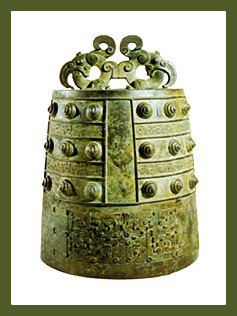
Freer Gallery of Art. W.D.C
Chinese culture promotes and emphasizes a form of social life in their communities rather than give more importance to the individual lives of human beings, but underlines the importance of the relations between the members of a family or between the individual and their King or Emperor according to the historical period. In their efforts to confront the challenges of everyday life as society get their greatest strength using the gifts from nature and working very hard. Among the typical themes of traditional Chinese art there is no place for war, violence, the nude, death, or martyrdom. Nor is inanimate matter ever painted for art’s sake alone. All traditional Chinese art is symbolic, for everything that is painted reflects some aspect of a totality of which the painter is intuitively aware.Their society was more prone to secularism and respect for nature than devotion to omnipotent gods as it was certainly the trend in Western civilizations.
So far the history of Chinese civilization has been situated in the Valley of Yellow River in China; between approximately 5,000 to 4,000 BC in the ” Early Neolithic period “. New archaeological findings at Sanxingdui, a small village about 20 miles northeast of Chengdu in Sichuan province have uncovered objects dating from around 1200 B.C. There were two sacrificial pits containing hundreds of foreign objects never before found buried and hidden for 3,000 years,.
Among them objects of gold, imposing human heads made in bronze, bronze with unusual shape masks, as well as some tools of stone and jade, showing how these early men already have certain skills that allows them to represent the elements that make up their daily lives such as viticulture, hunting and fishing. There are aspects of social coexistence represented with themes such as banquets and acrobatic shows, as well as its incipient world of mythology and religion. Today the Chinese people are learning much more about their own culture thanks to the multidisciplinary studies that are underway in this vast country in Asian region.
The agricultural villages in the Valley of the Yellow River tamed animals, made pots for storing grains and liquids and also produced bronze vessels and effective weapons. People who settled in homes along other rivers like the Yangtze and the Huai developed similarly their life. Artistic objects found in these ancient civilizations of China’s approximately 4,000 BC placed them as one of the cultures most skilled in the creation of beautiful and practical objects.
The early history of China is traditionally divided into three dynasties:
– Hsia or Xia (2205-1766 B.C.).
– Shang (1766-1050 B.C.).
– Zhou (1050-256 B.C.).
As I had mentioned before;Chinese culture since ancient times has always been closely identified with nature, in which the rivers and Mountains occupy the center of their attention. Nature was widely represented in their paintings and ceramics decorations, even the buildings were made with shapes that resemble the mountains. Those buildings are focused on the practical use not in its decoration. Chinese architect and craftsmen from ancient times combined the architectural features of the building with its surrounding and integrate them perfectly balanced with nature. The Great Wall of China a renowned architectural wonder made to protect the country along miles and miles was at the top of mountains, taking advantage of a natural geography of a protruding landscape.
They made gardens with gentle and simple designs with the intention to represent a perfect microcosm where water, plants, flowers and animals are perfectly combined. With this representation of natural elements, the Chinese people wanted to get a balanced integration between man and nature. During the Buddhist and Taoist period this respect, veneration and protection of nature rich a peaks and can be perceived very well in its representations of art in the caves, sanctuaries and decorated objects of everyday life that have been conserved.
Thematics of artistic expressions, including stories and poems, mainly revolved around nature, rivers, mountains and valleys where mythological creatures with super powers influenced their lives. It is known that in the Shang dynasty period, they believed in the existence of a good and all-powerful dragon that they believed lived in the seas and rivers, and could rise to the heavens. They do not directly worship the gods in ancient times; they demanded justice and favors through their ancestors.
Legends and stories told at night in discussions around campfires must have helped spur the social and cultural evolution of these first humans, who poured their imagination in to decoration of objects, such as pottery, paintings and weapons. Their imagination was later reflected in their writings symbols and thanks to this the legends and important historical events have come to us.
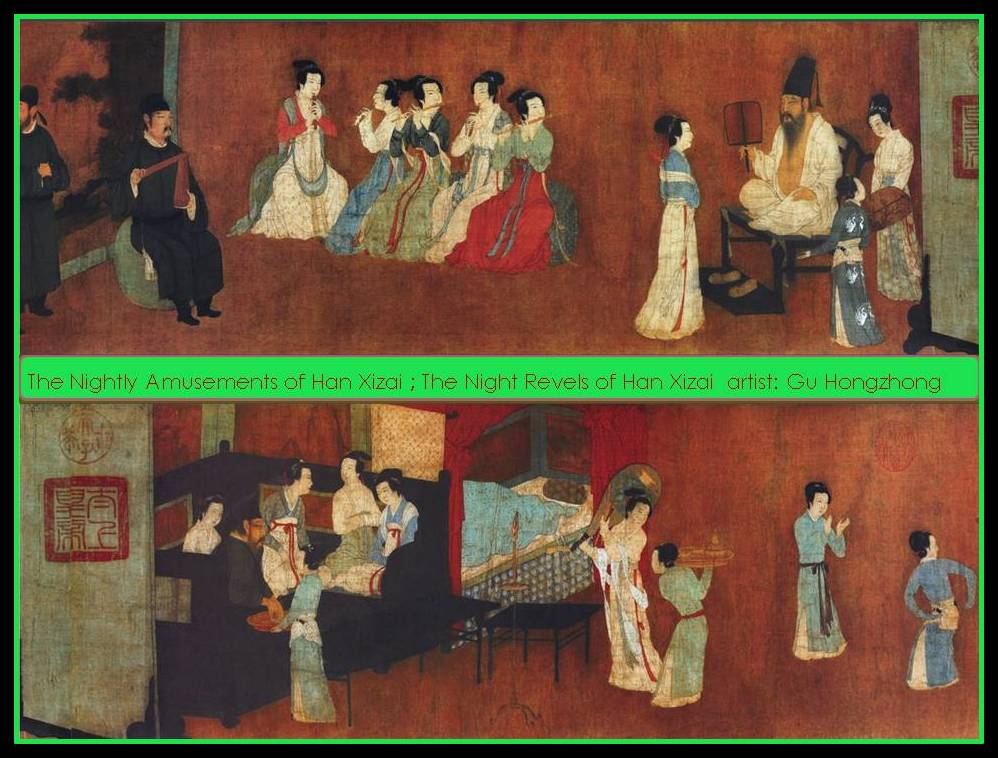
Importance of the Chinese’s people calligraphy in their works of art.
In early times the Chinese paintings were made using a lot of colors and artistically located in them was their calligraphy, once this one was invented, to the point that it prevails over the images represented throughout its history in some stages.
The calligraphy of China raise the level of their artistic decorations and was perfectly integrated into their pictorial representations, on the embossment of practical bronze vessels, as well as in the grip of weapons, in their beautiful lacquered wood objects, in their colorful textiles of exquisite beauty and even in decorative wood elements that were part of its buildings.
This form of artistic expression and communication is considering an art that is helping today the better understanding of their plastic works in general and the historical and socio-economic context in which they were created. Skill and expressive quality in the practice of calligraphy and painting helped establish one’s status in a society of learned individuals from the Song dynasty (960–1279) onward.
Calligraphy was represented in decorations since the days when they only were pictograms, until they become ideograms artistically representing ideas trough symbols. Their calligraphy was unified by imperial decree throughout China by the first emperor Ying Zheng, so even though they were speaking different dialects across the country could understand each other thanks to the writing symbols. He imposed in the country the use of the zhuanshu style as standard writing system, laying thus the basis for the further evolution of Chinese characters. Calligraphy has also led to the development of many forms of art in China, including carved seals, ornate paperweights, flags or banners and other pieces made of stone. All made with a practical function but in which the decorative aspect was also observe.
Their representation of nature although very detailed and colorful in early periods as mentioned earlier, dramatically changed along the way to become a painting style with two tones of colors with different shades, although they continue working with high attention to details. This change is related to the school of painting creation by the artist and patron, Emperor Huizong of the Song dynasty in the 12th century, which promotes Taoism during his tenure. This is the style of Chinese painting period in which their artistic creations were not based on real scenes, they are more idyllic, yet imaginative and gentle, with very detailed depiction of nature feature, but in which the human figure is no more than a tiny element represented in beautiful and romantic landscapes and integrated seamlessly in it. The calligraphy gets from this point on an important role in the painting.
The Ancient Chinese people art and their religious belief representation.
For the ancient Chinese was always very important show respect to their ancestors, probably to the same level as other cultures worshipped their gods. They performed the Oracle divination by reading the bones. Remains of those pertaining to the Shang dynasty have been found in which can be perceive they valued bronze material more than gold. On the bronze vessels, the Shang King offered wine as a tribute to their gods and honored their ancestors. The bronze also was used in domestic tasks developing vessels to contain wine and water, although its high content of lead may had been harmful to their health.
Religion was associated with the cosmology in ancient Chinese culture, the movements of the planets and stars were represented in Shang dynasty (1766-1050 B.C.); showing their acute observation capacity and proverbial patience when they use this knowledge to their advantage in agriculture. They represented in art this knowledge, leaving proof of this in pottery with decorations of stars and Zodiac symbols.
Inventions attributed to Chinese civilization related to art.
Many are the inventions attributed to the Chinese people in ancient times that are directly related to their art, and those are the one about to talk in this article. They were known for keep the secrets of their skills in each trade well protected for millenniums in with no foreigner could obtain them. Many inventions related to the art in China were invented hundreds and even thousands of years before the Western civilizations. The invention of a method to print with ink over paper made from rice paste was one of the most significance.
Noteworthy was also the elaboration of beautiful ceramics with practical use, but when the porcelain was discovered, were famous for their perfection in its design and detailed decoration. They kept for centuries for themselves the secret of how to do porcelain vessels. For the Chinese, it was not only an economic issue, but also a way to honor family traditions.
Its artisan tradition, with attention to detail and hard work turned their developed objects into exquisite works of art. As soon as the products of this ancient Chinese culture are known in Western civilization have high demand, mainly for its high quality, plus an aura of mysticism about the unknown Eastern civilization that captivated immediately the imagination and desire of upper class in the West to own so wonderful and exotic goods.
The secret of making porcelain for example was protected by the Chinese authorities with the death penalty to those who dared to reveal it, even it was forbidden for the foreign dealer visit the interior of China and only in specific commercial places designated near the coast they could obtain the goods. They have always been cautious about the commercialization of their products tending to rather be economically self-sufficient, but they had to adapt to new economic necessities’ to increase its monetary flow due to the growth of the population, creating specific products to export in line to the Western taste.
Equally protected was the method for the production of silk fabrics which was discovered in China 5000 years ago. The famous Silk Road was developed by Western countries to obtain coveted merchandise, its soft and light texture reached high appreciation and demand that were compared with the value of gold and even magical attributes were also conferred to the silk. It is well known that the Roman Empire citizens did care so much for this fabulous fabric and imported such huge amount that textiles trade protection laws was decreed by the Roman authorities.
Chinese were masters in the use of wood for construction, furniture and artistic decorations.
In China the elaboration of various wooden objects becomes also a trade which passes from father to son for generations; as other trades did. Bamboo and precious wood objects were developed for centuries by them with practical use and detailed decoration, some with very difficult intricate designs, among them hand fans, jewelers boxes, containers for incense, as well as diverse architectural elements such as doors and windows in which not a single nail is used, but putting instead overlapping wood pieces with a pretty clever technique that has tested for centuries the efficiency of their innovative constructive skills using wood.

In Chinese art is often used lacquer; a clear layer of the SAP of the trees used to add beauty and luster to objects made of wood which protects them from insects and the deterioration of climate. The western culture try to imitate in different ways the incredible finish the Chinese provide to their artistic objects some of which had up to sixteen layers of the lacquer. Lot of time, try and error efforts had to be endure by the western artisan’s until they found some decent approach using different techniques that offered a look alike lacked itch effect in their pieces. Although they had certain demand were very expensive due to the hard work and time consuming task that their technique require.
The ancient Chinese Folding Screens.
Highlighted among the furniture produced by the Chinese art are the folding screens. The Chinese people have known them as ‘pingfeng’ meaning in Chinese language “to protect from the wind”. It is known the existence of these panels or folding screens from the Han dynasty (206 BC-220 AD).This screens were very popular through the years and found in palaces and mansions of kingship both in China and European courts, where they used them to divide rooms and for privacy. These folding wooden lacquered panels are combined often with paintings on paper and are true masterpieces showing the screens mostly secular content where dragons, birds, colorful peacocks and landscapes support the illustration of Chinese boundless imagination.
There are a variety of types of screen, to be the principal which have vertical and folding screens, although very few of the older ones are preserved. They have been used extensively throughout history and were made as well in other countries over time, following the traditional Chinese mode.
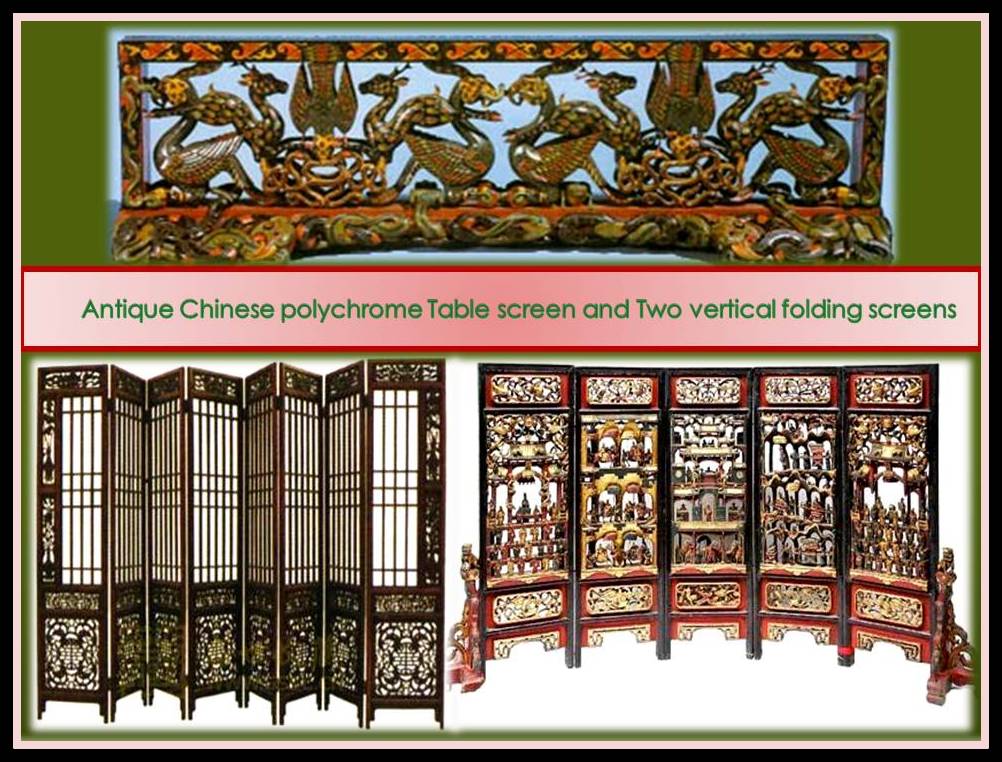
Their amazing ability to create beautiful carved ivory objects is also proverbial. These objects have a wide range of different use with elaborate designs that show scenes of hunting, military confrontations and the courtly life. This illustrations help us to understand the life of these ancient men, their philosophy of life, love for nature and its conflicts as a society.
Development of carved jade figurines is another artistic manifestation where Chinese artisans shine since ancient times. This material was also used in jewels, boxes and formidable decorative containers intended for religious purposes, many have secular content and practical use and is truly remarkable the quality and beauty reached because this material is very hard and difficult to carve.
The aesthetics of line in calligraphy and painting have had a significant influence on the other arts in China. There are many artistic manifestations in which Chinese ancient culture excel, among them its painting really protrude, with the distinctive way to represent nature perfectly balanced with human life and using calligraphy in them, as well as by combining delicate and poetic typical expression of popular Chinese traditions and legends in their work with clever technique and inventions and applying them to painting, architecture, sculpture, pottery and textiles. This was possible thanks to the imagination and hard work of the unknown craftsmen first and to more intellectually developed artists latter since the creation of the school of painting that produced true masterpieces, many of which have been preserved despite the effects of wars, weather, and religious clashes.

